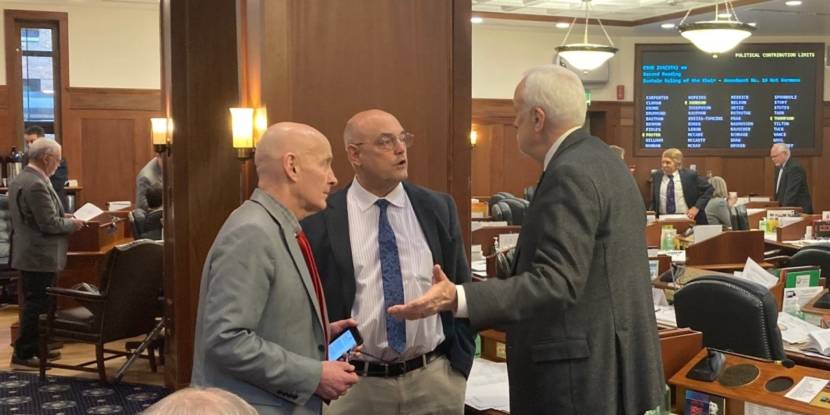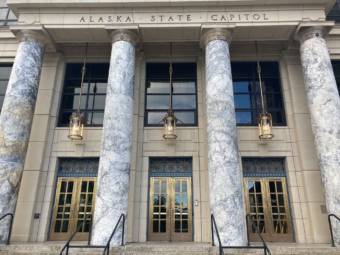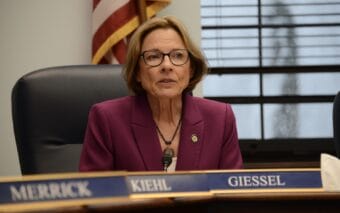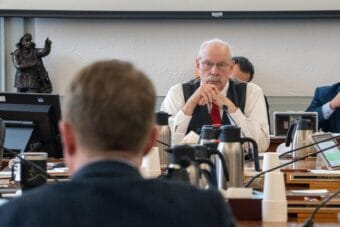
The state legislative session begins on Tuesday, and the Alaska House is still not organized. That means representatives have not yet formed a majority coalition or assigned leadership roles.
Without being organized, the House can’t move ahead with its legislative business when the session begins. This is the third time in a row in which the House has begun the session without leadership. The Senate organized and announced its leadership structure in November. Seventeen of the Senate’s 20 members formed a bipartisan majority coalition.
The House is nearly evenly split along party lines, with 21 Republicans and 19 Democrats and Independents. In recent years the House majority has been a multi-party coalition, but it’s unclear whether that will happen this year.
“The question is … how are we going to figure out an organization that goes forward, because neither side can go independently on their own without the help of the other,” said independent Rep. Dan Ortiz.
Ortiz, who represents Ketchikan, Wrangell and Metlakatla, said he would rather have a larger majority than a narrow one.
“I would not be inclined to be a part of a coalition that would only have 21 members,” he said, adding that a narrow majority could prove ineffective, since any one member could stall an action.
Ortiz said an ideal coalition would include 24-30 members. He said he thinks a larger coalition would also ensure a more moderate agenda.
Forming a coalition involves lots of discussion between lawmakers behind the scenes to identify common interests and policy goals.
House Republicans have been somewhat reticent to discuss how the process is playing out. Anchorage Rep. Tom McKay, for example, said over email that he couldn’t comment on the organization process, claiming it’s “confidential” caucus business.
Another Anchorage Republican, Rep. Dan Saddler, declined to comment on the dynamics of organization conversations with individual lawmakers or the size of a possible coalition.
“I think a lot of folks are very hopeful that we’ll have some organization in place so that the people’s representatives can hit the ground running on the first day of session,” Saddler said. “Your guess may be as good as mine as to how likely that is to happen.”
In 2021, the House organization process took 24 days. In 2019, the process dragged on 31 days into the session.
This legislative session includes more than a dozen first-time House representatives. Saddler, who is returning to the House after a few years away, said though the large cohort of freshmen might be starting with less knowledge about the “mechanics” of organization, he said it’s also creating new opportunities.
“Frankly, if you approach the situation with a fresh eye, you might find fresher solutions to old problems,” he said.
One of those freshmen is independent Rep. Rebecca Himschoot, who serves Sitka, Petersburg and Yakutat. Himschoot, along with other moderate members could play an important role in forming a coalition.
“When I first ran, I evaluated ‘who am I?’ and I just recognized that I am someone who very much believes in that middle road,” Himschoot said. “Only later did it occur to me that that could become valuable in terms of trying to put together a majority.”
Himschoot said so far her discussions have mostly been one-on-one phone calls to lay out her policy priorities around education and state fiscal health, but she expects things to speed up once the body convenes in Juneau.
She said while she’s not sure a coalition will come together by Tuesday, she’s confident that whatever structure is formed will be in the best interest of the state.
“I think, individually, we’re all frustrated. We would like it to come together,” Himschoot said. “But I think we’re also very invested in making something that works.”



